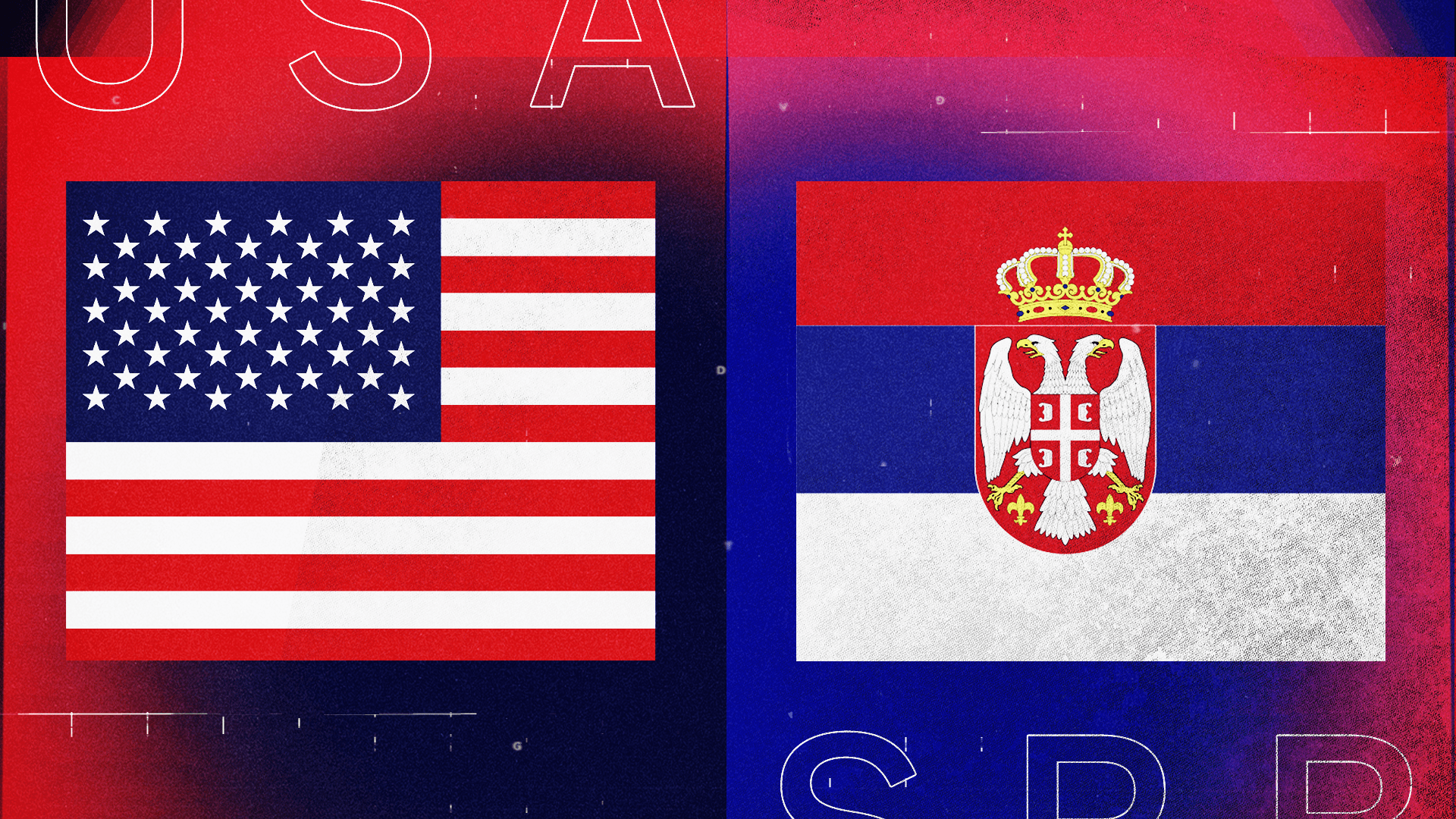Historical Relations Between the USA and Serbia: Usa Va Serbia

The relationship between the United States and Serbia has been a complex and multifaceted one, shaped by historical events, political shifts, and cultural exchanges. From early diplomatic ties to periods of conflict and reconciliation, the two nations have navigated a path marked by both cooperation and tension. This journey has been influenced by pivotal historical moments, the actions of prominent figures, and the framework of international agreements.
A Timeline of Key Events
The history of relations between the USA and Serbia can be traced back to the 19th century, when the two nations were still developing their identities.
- 1838: The United States formally recognizes the Principality of Serbia as an independent state, marking the beginning of diplomatic relations.
- 1878: Following the Russo-Turkish War, Serbia gains further autonomy, and the USA acknowledges its growing independence.
- 1914: The assassination of Archduke Franz Ferdinand in Sarajevo triggers World War I, in which Serbia aligns with the Allied Powers, including the USA.
- 1918: The creation of the Kingdom of Yugoslavia brings together various South Slavic territories, including Serbia, under a unified government.
- 1941: Germany invades Yugoslavia, and a puppet state is established. The USA provides humanitarian aid to the Yugoslav resistance movement.
- 1945: The end of World War II leads to the establishment of the Socialist Federal Republic of Yugoslavia, a communist state under the leadership of Josip Broz Tito.
- 1990s: The disintegration of Yugoslavia, fueled by ethnic tensions, leads to a series of conflicts, including the Bosnian War and the Kosovo War. The USA plays a significant role in the international response to these conflicts, including military intervention in Kosovo.
- 2006: Serbia declares independence from the remaining Yugoslav federation, marking a new chapter in its history and its relationship with the USA.
- 2008: Kosovo declares independence from Serbia, leading to a period of strained relations between the two countries.
- 2012: Serbia signs a Stabilization and Association Agreement with the European Union, paving the way for closer economic and political ties with the West.
- 2014: Serbia and the USA sign a strategic partnership agreement, outlining their commitment to cooperation in areas such as security, economic development, and cultural exchange.
The Impact of Key Figures
The relationship between the USA and Serbia has been shaped by the actions and policies of prominent figures from both countries.
- Woodrow Wilson: The 28th President of the United States, Wilson played a key role in the aftermath of World War I, advocating for the establishment of a League of Nations and for the recognition of Serbian independence.
- Franklin D. Roosevelt: The 32nd President of the United States, Roosevelt provided significant aid to Yugoslavia during World War II, helping to support the resistance movement against the Nazi occupation.
- Josip Broz Tito: The leader of Yugoslavia from 1945 to 1980, Tito pursued a policy of non-alignment during the Cold War, balancing relations with both the West and the Soviet Union. He also fostered a close relationship with the USA, which helped to stabilize the region.
- Bill Clinton: The 42nd President of the United States, Clinton played a key role in the NATO intervention in Kosovo in 1999, aimed at stopping the ethnic cleansing of Albanian Kosovars by Serbian forces.
- Slobodan Milošević: The President of Serbia from 1989 to 2000, Milošević’s policies of ethnic nationalism and Serbian dominance contributed to the disintegration of Yugoslavia and the outbreak of the Balkan Wars. His actions led to a deterioration of relations between Serbia and the USA.
- Vojislav Koštunica: The Prime Minister of Serbia from 2004 to 2008, Koštunica was a key figure in the transition to democracy in Serbia after the fall of Milošević. He worked to improve relations with the USA and to promote Serbia’s integration into the international community.
- Boris Tadić: The President of Serbia from 2004 to 2012, Tadić continued to pursue a policy of reconciliation and cooperation with the West, seeking to strengthen ties with the USA and to promote Serbia’s accession to the European Union.
The Role of International Organizations and Treaties
International organizations and treaties have played a significant role in shaping the relationship between the USA and Serbia.
- The League of Nations: Following World War I, the League of Nations, an international organization aimed at promoting peace and cooperation, played a role in mediating disputes and providing a platform for diplomatic engagement between Serbia and other nations, including the USA.
- The United Nations: After World War II, the United Nations emerged as a central forum for international relations, and Serbia, as a member state, has engaged in numerous UN initiatives, including those related to peace and security, human rights, and development. The USA has been a key partner in many of these initiatives.
- The International Criminal Tribunal for the former Yugoslavia (ICTY): Established in 1993, the ICTY was tasked with prosecuting individuals responsible for war crimes and crimes against humanity committed during the conflicts in the former Yugoslavia. The USA played a significant role in supporting the ICTY and in holding individuals accountable for their actions.
- The NATO-Serbia Partnership: In 2006, Serbia began participating in the NATO Partnership for Peace program, marking a significant step towards closer cooperation with the Western alliance. The USA has been a key supporter of Serbia’s participation in the program, which has helped to promote security and stability in the region.
- The Stabilization and Association Agreement (SAA): Signed in 2012, the SAA is a framework agreement between Serbia and the European Union, aimed at fostering political and economic reforms in Serbia and promoting its eventual accession to the EU. The USA has expressed support for Serbia’s European integration and has played a role in providing technical assistance and encouraging reforms.
Economic and Trade Relations

The economic relationship between the USA and Serbia is characterized by a significant disparity in size and economic development. The USA, a global economic powerhouse, boasts a robust and diversified economy, while Serbia, a developing nation, is still catching up. Despite these differences, the two countries have fostered a growing economic partnership, driven by trade, investment, and cooperation in various sectors.
Economic Strengths and Weaknesses
The USA and Serbia exhibit distinct economic strengths and weaknesses, shaping their respective roles in the global economy.
- The USA, a global economic leader, possesses a highly developed and diversified economy. Its strengths include a robust financial system, advanced technological infrastructure, and a skilled workforce. However, the USA faces challenges such as high national debt, income inequality, and a widening trade deficit.
- Serbia, a developing nation, has experienced steady economic growth in recent years. Its strengths include a young and relatively skilled workforce, a strategic geographic location, and a growing manufacturing sector. However, Serbia faces challenges such as high unemployment, limited access to finance, and a need to further develop its infrastructure.
Key Areas of Trade and Investment, Usa va serbia
The USA and Serbia have identified several key areas of trade and investment, reflecting their mutual interests and opportunities.
- Agriculture: Serbia is a significant producer of agricultural products, including fruits, vegetables, and grains. The USA is a major importer of agricultural goods, creating opportunities for Serbian exports.
- Manufacturing: Serbia has a growing manufacturing sector, particularly in automotive, electronics, and textiles. The USA is a major market for manufactured goods, offering potential for Serbian businesses.
- Technology: Serbia is developing its technology sector, particularly in software development and information technology services. The USA is a global leader in technology, offering opportunities for collaboration and investment.
- Energy: Serbia is seeking to diversify its energy sources, with opportunities for investment in renewable energy and energy efficiency technologies. The USA has a strong track record in energy technology, providing potential for cooperation.
Impact of Trade Agreements and Tariffs
Trade agreements and tariffs play a significant role in shaping economic relations between the USA and Serbia.
- The Generalized System of Preferences (GSP): The USA grants GSP status to Serbia, providing duty-free access for certain goods. This has facilitated increased trade between the two countries.
- Trade and Investment Framework Agreement (TIFA): The USA and Serbia have a TIFA, which provides a framework for promoting trade and investment. This agreement aims to address trade barriers and create a more favorable environment for businesses.
- Tariffs: While the USA and Serbia have a free trade agreement in place, some tariffs may still apply to specific goods. These tariffs can impact the competitiveness of goods from both countries.
Political and Diplomatic Ties

The United States and Serbia share a complex history marked by periods of cooperation and tension. In recent years, the two countries have embarked on a path of strengthening their political and diplomatic relations, driven by shared interests in regional stability, economic development, and security cooperation.
Current State of Relations
The current state of political and diplomatic relations between the USA and Serbia is characterized by a mix of cooperation and strategic competition. The two countries have a shared commitment to democratic values and principles, and they cooperate on issues of mutual concern, such as regional stability, combating terrorism, and promoting economic development. However, disagreements remain on certain issues, including Kosovo’s independence, Serbia’s relationship with Russia, and human rights concerns.
Role of Political Leaders and Diplomatic Missions
Political leaders and diplomatic missions play a crucial role in shaping the relationship between the USA and Serbia. The US administration has consistently emphasized the importance of Serbia’s alignment with Western values and its commitment to democratic reforms. US diplomats have actively engaged with Serbian officials on a wide range of issues, promoting cooperation and addressing concerns. Serbian leaders, in turn, have sought to strengthen ties with the USA, recognizing the benefits of closer cooperation.
Areas of Cooperation
The USA and Serbia have identified several areas of cooperation, including:
- Regional Stability: Both countries share a common interest in maintaining peace and stability in the Western Balkans. The USA has provided significant support to Serbia’s efforts to resolve the Kosovo issue through dialogue and compromise.
- Economic Development: The USA has encouraged Serbia’s economic reforms and its integration into the global economy. US businesses have invested in Serbia, contributing to its economic growth.
- Security Cooperation: The two countries have engaged in joint military exercises and have cooperated on counterterrorism efforts.
- Human Rights: The USA has raised concerns about human rights issues in Serbia, particularly the treatment of minorities and freedom of the press.
Areas of Disagreement
Despite their areas of cooperation, the USA and Serbia continue to disagree on certain issues:
- Kosovo’s Independence: The USA recognizes Kosovo’s independence, while Serbia does not. This issue remains a major point of contention.
- Serbia’s Relationship with Russia: The USA has expressed concerns about Serbia’s close ties with Russia, particularly in the context of Russia’s actions in Ukraine.
- Human Rights: The USA has raised concerns about human rights issues in Serbia, including freedom of the press, the treatment of minorities, and the rule of law.
Usa va serbia – The clash between USA and Serbia on the basketball court is a testament to the enduring spirit of competition. Both nations boast a rich history of basketball excellence, with Serbia’s grit and skill often challenging the USA’s dominance. To truly appreciate the magnitude of this rivalry, we must delve into the usa basketball stats , a legacy of dominance that has shaped the sport.
The USA vs. Serbia matchup is a captivating spectacle, a reminder that even the most formidable teams can be pushed to their limits.
The clash between USA and Serbia on the basketball court is a testament to the spirit of competition. Both nations have a rich history of athletic prowess, and their battles on the court are often intense and captivating. To truly appreciate the magnitude of these matches, delve into the olympics basketball scores and witness the evolution of the game.
You’ll see that each point, each victory, is a reflection of the dedication and resilience that defines both USA and Serbia in the world of basketball.
